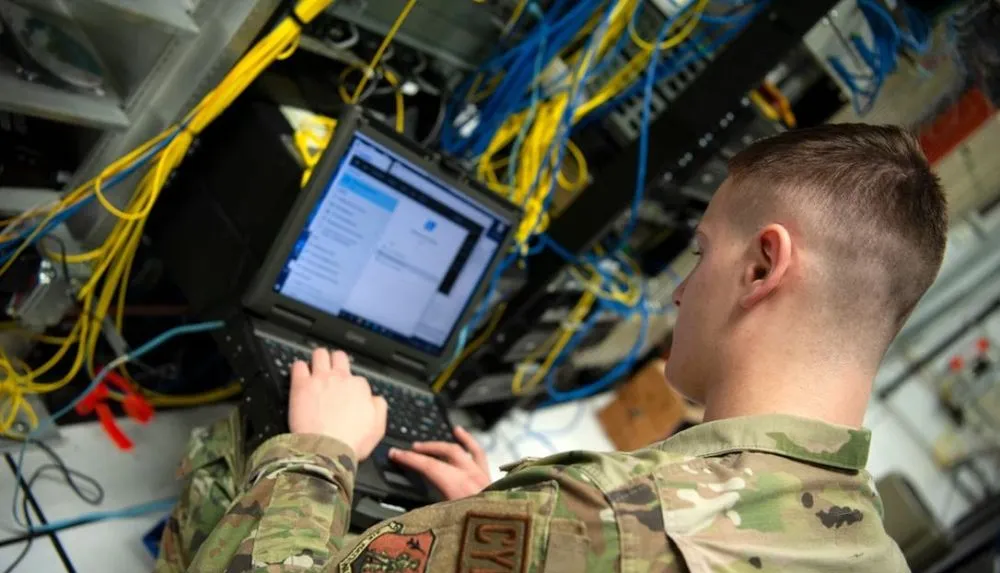Panel to create roadmap for establishing US Cyber Force
A group of former civilian leaders and retired military digital security brass on Monday launched an effort that will spell out in detail how the country should proceed in one day establishing a U.S. Cyber Force.
The Commission on Cyber Force Generation will develop potential routes Congress and the White House could follow in creating a separate cyber service and aim to have completed the bulk of the work ahead of next year’s must-pass national defense authorization act (NDAA), according to panel co-chair Josh Stiefel, who previously served as a professional staff member on the House Armed Services Committee.
“The timing is right, with this administration, where I left in order to pursue this,” Stiefel, now vice president for government affairs at Second Front, a defense technology and security firm, told Recorded Future News in an exclusive interview. “I believe that there's this opportunity now to draw attention to this issue and make progress on it in a meaningful way.”
The committee was formed through a partnership between the Center for Strategic and International Studies and the Cyberspace Solarium Commission 2.0.
Its 17-member board is composed of several former, high-ranking civilian leaders — such as Michael Sulmeyer, the Pentagon’s first Senate-confirmed cyber policy chief, and Georges Barnes, who served as the No. 2 at the National Security Agency. It also boasts past cyber warfare chiefs from each military branch, including retired Admiral Michael Gilday, who served as Chief of Naval Operations, as well as experts from industry and academia.
Retired lieutenant general Ed Cardon, who led Army Cyber Command and will co-chair the commission with Stiefel, said the panel is “about generating speed to the decision” of establishing a digital service “because the threat is increasing, and the technology is adding speed to the domain, and we can't sit around for four or five years and figure out how to do it.”
The commission arrives at a unique time for the military’s cyber forces.
President Donald Trump unexpectedly fired the head of U.S. Cyber Command almost four months ago and has not named a replacement. A long-anticipated revamp of the digital warfighting entity, dubbed “Cyber Command 2.0,” has been sent back to the drawing board, though many observers believe it is essentially dead.
Meanwhile, bipartisan frustration has grown on Capitol Hill over the chronic failure by the existing military branches to provide Cyber Command with personnel who are ready to battle foreign adversaries online like China.
It reached a boiling point last year when lawmakers approved a final compromise defense policy roadmap that included a provision charging the National Academy of Sciences, Engineering, and Medicine (NASEM) with evaluating the feasibility of creating a Cyber Force. That study is expected to conclude later this year.
Retired Lt. Gen. Charles “Tuna” Moore, who served as Cyber Command’s deputy chief until 2022 and has publicly argued against creating a potential seventh military branch dedicated to digital warfare, derided the new commission.
"It's difficult to reconcile the tasking in the NDAA to conduct an objective assessment of what type of cyber organization would be in the best interest of the nation with the fact that a separate unofficial effort is also underway to design what a cyber service would look like,” he said.
“I’m hearing from voices across the community who are concerned that the legitimacy of the Congressionally mandated study is being undercut by the second."
Stiefel stressed the work by the academies and the commission will be “incredibly distinct” because NASEM is focused solely on “should we, or should we not, have a service aligned to this warfighting domain” whereas the new panel’s “core, ironclad assumption at the outset is that the president has ordered the establishment of the Cyber Force. And then we're going to design it.”
There is precedent for Trump shaking up the country’s military. The U.S. Space Force owed its relatively smooth creation in 2019 to Trump and former Vice President Mike Pence, who pushed the idea inside the White House and touted it at campaign rallies, well after the service was established.
However, the branch has since become mired in debates about what it does, if it should sport a National Guard component and whether it has been assigned too many missions.
Still, there is the possibility that Trump, who is notorious for making seismic policy decisions on social media, could leave the commission behind by publicly demanding a new cyber service — a possibility Cardon and Stiefel embraced.
“If that happened, the department will execute” it, according to Cardon, who admitted he was opposed to the idea of creating a cyber branch when he was an active duty officer. “I think they might even ask us to come in.”
“Think about the resource we're creating for them, if that were to happen,” Stiefel added. “If the president wakes up tomorrow, I’ve got a set of people ready to go who are willing to give their time and attention to this really important thing, because the people who would be asked to stand it up in the department, they have other jobs right now.”
Martin Matishak
is the senior cybersecurity reporter for The Record. Prior to joining Recorded Future News in 2021, he spent more than five years at Politico, where he covered digital and national security developments across Capitol Hill, the Pentagon and the U.S. intelligence community. He previously was a reporter at The Hill, National Journal Group and Inside Washington Publishers.



